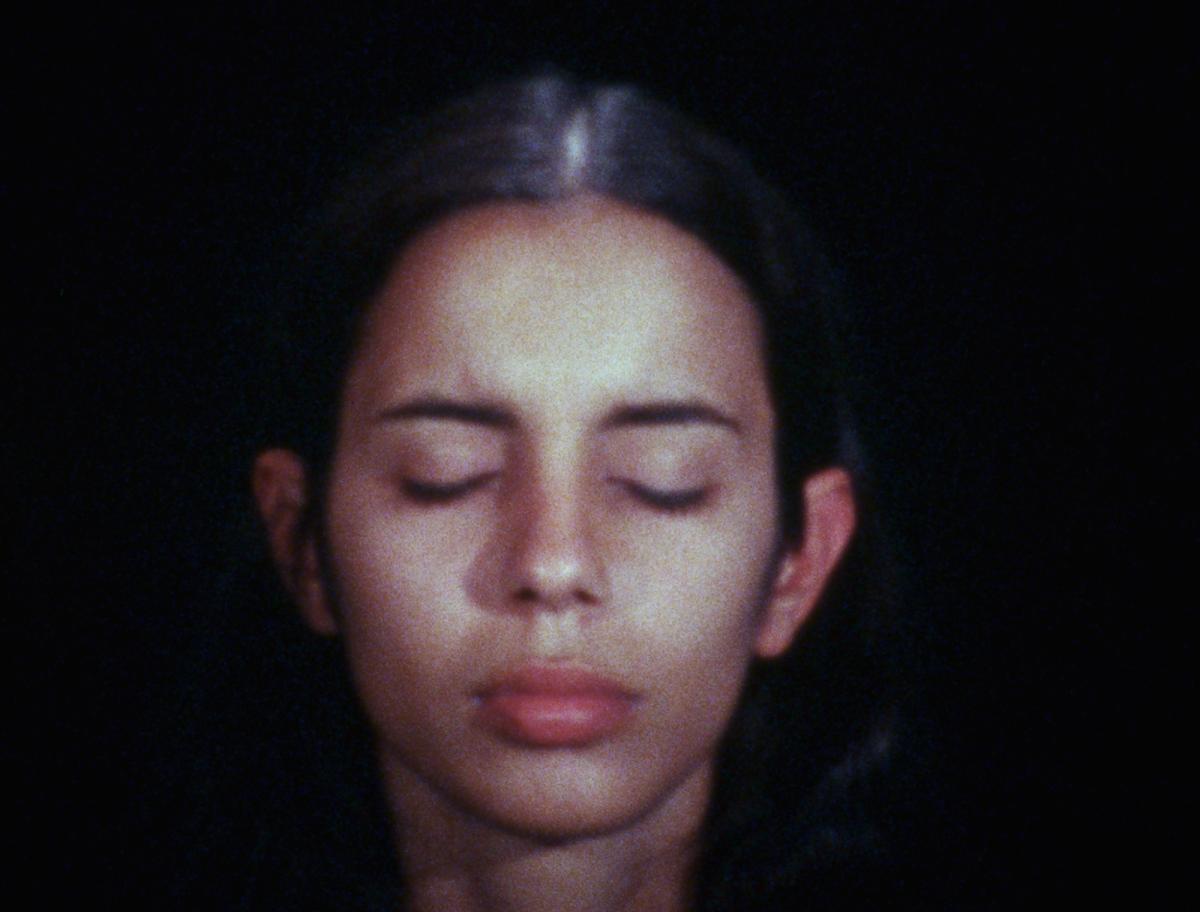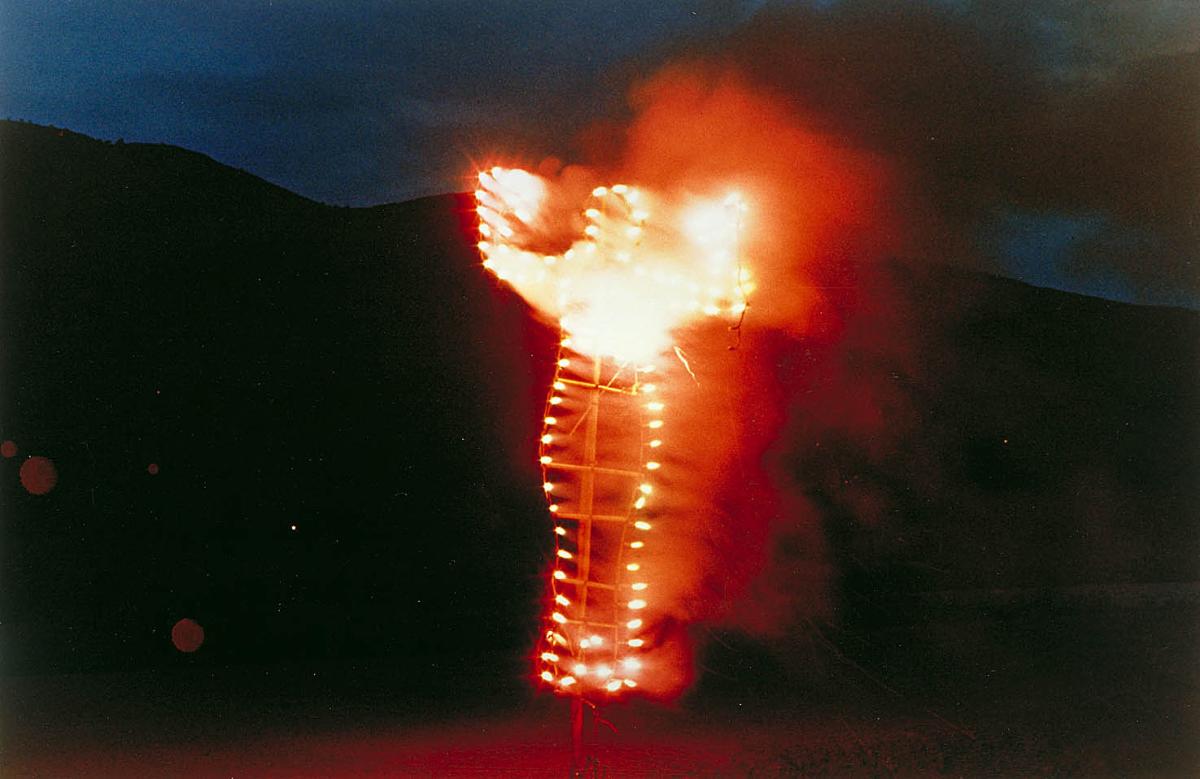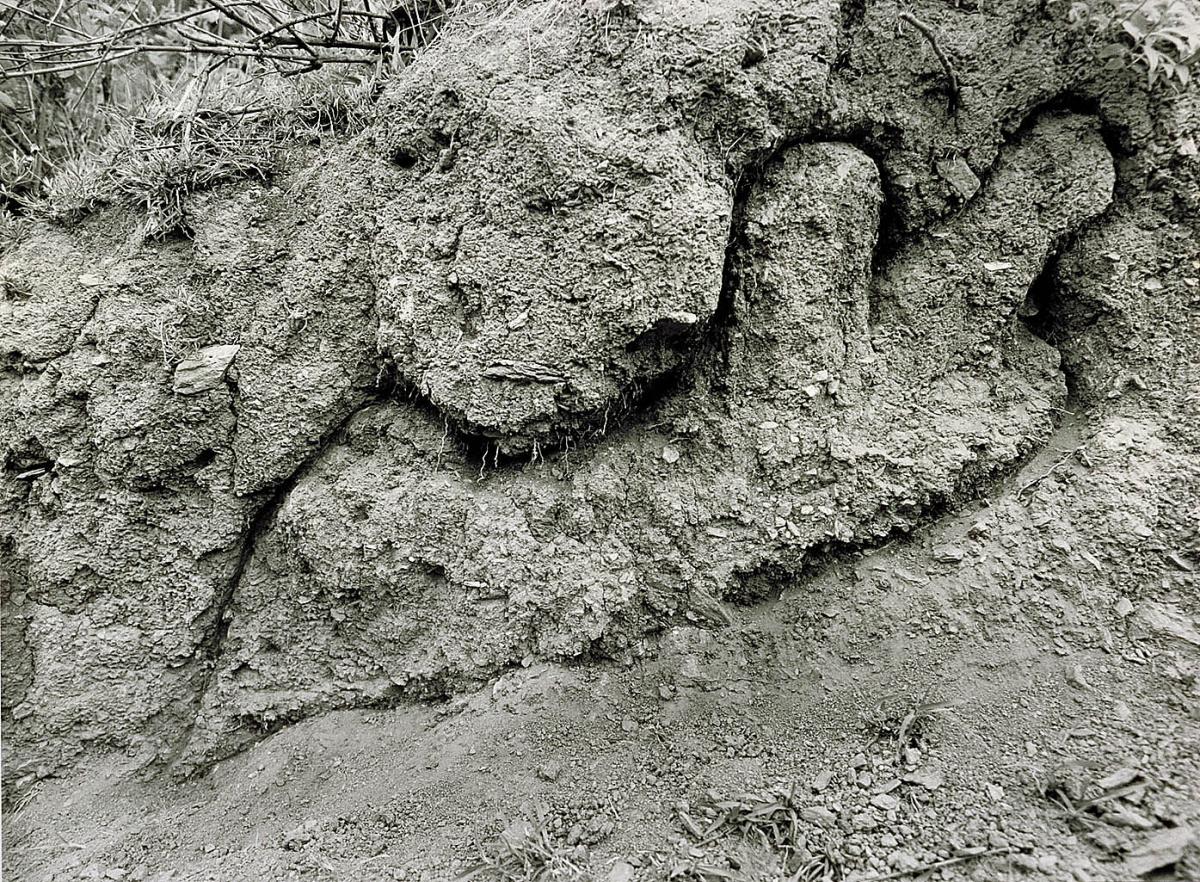
The image is striking, the effect is unsettling, the meaning is open for interpretation. Ana Mendieta’s Sweating Blood is projected in darkness. The short film shows a woman’s face framed in close-up against a black background. Her eyes are closed, and her expression is unmoving. At first, only slight shifts from her breathing indicate this is a moving image and not a photograph. Yet as the three-minute film unfolds, something strange happens. Imperceptibly to start, her brow begins to shine with red mist. Then visible pockets of red moisture accumulate from her scalp to her forehead. By the end, disquieting rivulets of blood are slowly dripping down her serene face.
Sweating Blood (1973) is one of the most iconic of the more than 100 moving image artworks made by Mendieta from the early 1970s to her untimely death in 1985. She is one of the most beloved artists of the twentieth-century and one of the most recognized Latina artists in the world. While SAAM has several of her photographs in our collection, my curatorial colleagues who are responsible for the museum’s collections of Latinx art and of twentieth-century art agreed that it was a shared priority to acquire an example of her super-8mm films for SAAM's collection. This will ensure her contributions to American art can be on display regularly in our soon-to-be renovated galleries.
Sweating Blood was our unanimous choice to bring into the collection. We all responded to its visceral power and presence– the artist’s face meets the viewer’s gaze with an intensity that is undeniable. This sustained self-portrait encapsulates the durational, ritualistic mode of performance and common materials—body and blood—that are signatures of her early work. The film connects to Mendieta’s many subsequent works in which blood functions as a potent symbol—evoking life as well as death, blood-ties, and their rupture, and the Catholic, Caribbean santería, and pre-Columbian spiritual practices that do not shy away from incorporating this life-sustaining fluid. Expressing growing feminist intentions, it also connects to a suite of works responding to the rape and murder of a fellow student at the University of Iowa in the previous year.
The timeless, placeless setting of Sweating Blood is unique among Mendieta’s recorded performances, which typically include the artist’s engagement with natural, architectural, and social environments. In this way, it also contrasts with Anima (Alma/Soul) (1976) and Untitled, from the Silueta Series (1980), from our collection, where her performing body is replaced by archetypal female silhouettes set in the landscape. Thanks to acquisition support for the film from the Smithsonian American Women’s History Initiative, SAAM can now trace the evolution between Mendieta’s early body-based projects and later land-based interventions.
Throughout her career, Mendieta examined profound, universal themes in the context of urgent political, personal, and artistic questions. She explored cycles of life, belonging and displacement, human and geological time, and struggles for self-determination and agency at the individual and international level. This focus was informed by her childhood experiences coming to the United States from Cuba at the age of twelve as part of Operation Peter Pan. As one of the more than 14,000 unaccompanied Cuban minors brought to the U.S. from 1960 to 1962, Mendieta turned to creative expression to foster connectivity in an isolating new context. Her innovative work integrated earth art, site-specific sculpture, drawing, and performance, as conveyed through film, photography, and gallery-based installations. Conceptually, she merged ideas of feminism with pre-colonial references and post-colonial critique, pointing towards future understandings of intersectional identity. We are thrilled that our new acquisition, Sweating Blood, weaves together so many of these threads into a singular and spectacular experience.
On Thursday, December 2, at 5:30 p.m. ET all of Ana Mendieta's films from Smithsonian collections, including holdings from SAAM, Hirshhorn Museum and Sculpture Garden, and the National Portrait Gallery, will be screened as part of the monthly series, Viewfinder: Women’s Film and Video from the Smithsonian. A post-screening discussion with Raquel Cecilia, the artist's niece and an independent filmmaker who oversaw the complete restoration and digitization of Ana Mendieta’s film collection, examines the artist’s legacy further. Viewfinder: Women’s Film and Video from the Smithsonian is sponsored by the Smithsonian American Women’s History Initiative, Because of Her Story. Watch recordings of Viewfinder programs online.




















